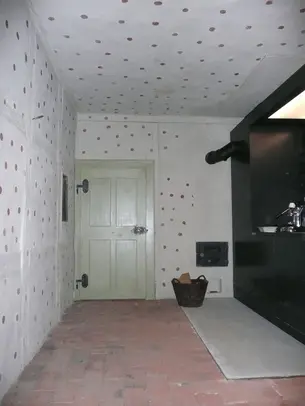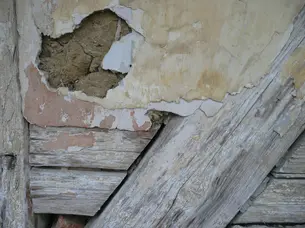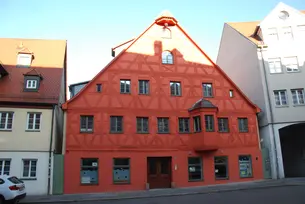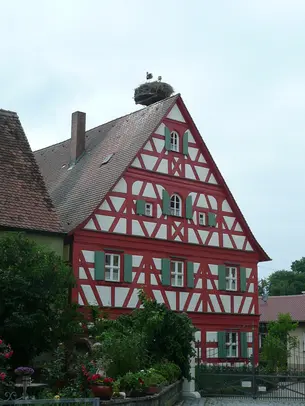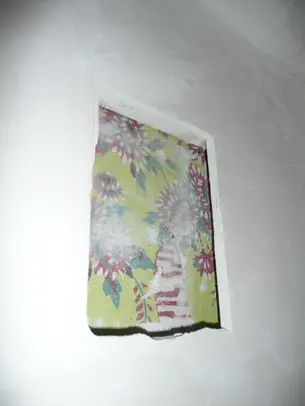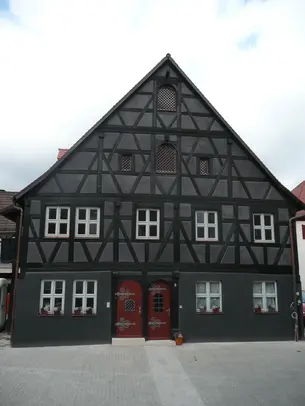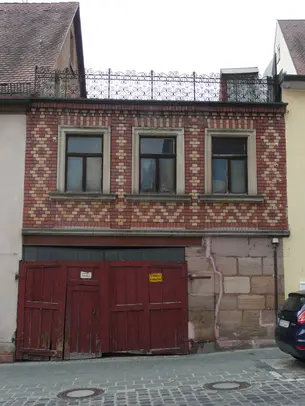Architectural color
Content and aims
A good basic knowledge is a prerequisite for scientific work in historic preservation. This also applies to the field of historical color. What is an appropriate approach to the color design of architectural monuments from the point of view of monument preservation? After all, in only a few cases is it a matter of visibly preserving the material substance. Color is volatile, a layer of wear and tear, often preserved only in tiny fragments. And yet the colorfulness - beyond the material substance - is an essential part of the monument's statement. How can the preservation of monuments work in a scientifically qualified manner against this background?
Color is an essential part of the monument and the monument statement. The colorful design of the monument - especially the facade - is in the public eye, because facades are seen by everyone. However, the monument expert's concern with historical color should by no means be limited to the facade; colorful interior design is also an important area of monument preservation. Color often arouses emotions.
New findings on historical color:
The following design phenomena are currently in particular focus:
Monochromaticism:
For the beginning of the 18th century, monochrome half-timbered facades in Franconia can be traced for the first time. For interiors, monochrome half-timbered frames are frequently encountered and are also known to be widespread in southern Germany. A monochrome design in this context means the same colored paint on both the wood of the truss construction and on the plaster fields of the infill. Individual observations in other regions of Germany suggest that monochrome finishes on half-timbered facades were once widespread.
This situation coincides with a general development in architectural coloration at the beginning of the 18th century. Important manorial buildings were painted monochrome, mostly stone-colored, across all facade divisions. In this context, lavishly stuccoed baroque interiors can also be seen, which were also painted in monochrome. Among them are quite a number of recently investigated formerly and now again white-painted church interiors. Or the monochrome "stone-gray" water hall of the Orangerie in Erlangen.
Dotted kitchen mounts
In kitchens in particular, the historic mounts are often badly damaged, making it correspondingly difficult to identify them. In the meantime, a large number of kitchens with colored dotted surfaces have been documented. The wide scattering of findings in terms of space, time and design prove that these are not isolated cases, but rather a once widespread design method. In summary, conclusions can be drawn about the type of design, the emergence and the distribution of dotted kitchens. The examples known so far are found in the center of Franconia, between Nuremberg, Bamberg and Ansbach, and in the area around Bardowick in Lower Saxony. However, a distribution far beyond this area can be assumed. Point settings in kitchens are attested from 1700 to the middle of the 19th century. The possibilities for variation in dot patterns seem almost unlimited.
Black frames
Black painted surfaces can be found again and again with attentive examination, even if they seem - from today's point of view - to need getting used to. The pigment used, soot, was easy to obtain and available everywhere. Black-painted wooden ceilings have been known for some time. However, entire interiors were also painted dark gray to black. In facade design, black was used both monochrome and in combination with a contrasting color (white, yellow, red). The individual findings have not yet been systematically recorded or evaluated.
Window color
Research on this topic is also still in its infancy. It should be noted that the triumph of white windows in southern Germany did not begin until the late Art Nouveau period. Wooden windows dominate the development until about 1750, whereas the proportion of opaque painted windows increases continuously from 1700 on. Typical baroque color schemes are "oak color" (ocher/brown), "silver color" (gray) and white. So far, green can be traced for the first time in 1766. As a single finding, a smalte blue for 1728 has also been handed down. Dark gray windows are also documented, and red windows may have been executed as early as the 18th century. In Classicism and Biedermeier (1770- 1860), gray and white seem to dominate, but wood-colored windows were still common, and green has also survived. The Wilhelminian period clearly favors wood-colored windows often as a wood-imitating paint with a graining. Dark grays and greens occasionally occur. Red is often used as a supposed wood preservative in the base coat. White windows are extremely rare in southern Germany at this time, but can be traced in isolated cases. Nothing fundamentally changes in Art Nouveau, white is on the rise but green tones are also gaining in popularity again.
Methodology
The basis of science is always knowledge, this must be acquired, indeed it must be expanded daily. Therefore, it is important to collect and evaluate color findings. There are certainly limits to the collection and clarification of color findings: In particular, the radical repair methods of the 20th and 21st centuries have destroyed large areas of historic architectural surfaces. Restoration studies of historic color, even in interiors, have been a good standard since the 1980s. In the database of the Bavarian State Office alone, almost 36,000 documentations on 17,500 architectural monuments of various contents are listed for the archive. It should also be noted, however, that the object documentation on historical coloration archived in the offices to date has a high error rate and is therefore only suitable for scientific evaluation to a limited extent.
Current publication
Nathan, Carola: Kein Aprilscherz! Gepunktete Küchen in Franken und Niedersachsen. In: Monumente, Magazin für Denkmalkultur, 24. Jg., Nr. 2; 2014, S. 22-25.
Wenderoth, Thomas: Monochrome Anstriche von Fachwerkfassaden in Mittelfranken. In: Herbert May, Georg Waldemer, Ariane Weidlich (Hrsg.): Farbe und Dekor am historischen Haus (Quellen und Materialien zur Hausforschung in Bayern, Bd. 15), Petersberg 2010, S. 189-199.
Wenderoth, Thomas: Kochen auf den Punkt gebracht, gepunktete Küchen des 18. und 19. Jh. in Franken. In: Denkmalpflege-Informationen, Ausgabe B 155, München 2013, S. 29-31.
Wenderoth, Thomas: Zur wissenschaftlichen „Substanz“ des Denkmalpflegers - Der denkmalfachliche Umgang mit Architekturfarbigkeit und ihrer Rekonstruktion. In: Landesamt für Denkmalpflege Schleswig-Holstein (Hrsg.): Denkmalpflege braucht Substanz. Jahrestagung der Vereinigung der Landesdenkmalpfleger in der Bundesrepublik Deutschland und 83. Tag für Denkmalpflege 7.-10. Juni 2015 in Flensburg. (Beiträge zur Denkmalpflege in Schleswig-Holstein, Bd. 6). Kiel 2017, S. 174-193.

